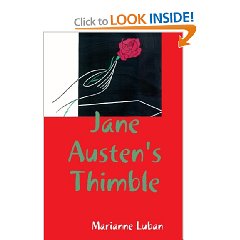http://www.clevelandleader.com/node/12880
I am not much in favor of Dr. Hawass making this announcement. Nothing will do but a paper by a qualified microbiologist in this instance,I am afraid, as few others are capable of explaining the intricacies of DNA. Rather than supplying the paternity of Tutankhamun, any positive yDNA match with the putative Amenhotep III will do more to confirm the questioned identity of the latter. A shared yDNA will not guarantee
that Tut is the son of Amenhotep III. He could still be his grandfather as yDNA is passed on from father to son and Akhnaten could still be the middle man there. Ditto if Tutankhamun is the offspring of another son of Amenhotep III--like Smenkhkare, for example, if that happensto be Smenkhkare's filiation.
One of the websites mentions that a priority of Dr. Hawass is to find the mummy of Nefertiti. Well, that is what the little babies from KV62 have the potential to show, as I have mentioned several times in the past. In order to learn the parentage of Tutankhamun on the maternal side, the two tiny mummies could come in handy as well. That is, if they happen to have the same mtDNA as Tutankhamun.
That makes it more likely that Tut and his wife, Ankhesenamun, had the same mother. Otherwise, nuclear DNA, if viable, can prove Tut to have been the father of the children. yDNA is not passed on to female offspring. Nor could Tut pass on his own mtDNA. That could only come from the babies' mother and grandmother--all the way back indefinitely. If there is a female mummy who also has that same mtDNA, then very good. But her identity cannot be positively ascertained because a mother, all her daughters and granddaughters have the same mtDNA. People can be ruled out much more easily than positively identified. If a mummy of a pharaoh of a given dynasty does not have the same yDNA as the other kings of the dynasty, he has either been misidentified or is a cookoo in the nest, the latter not being very likely. But then the way that dynasties are established in Egyptology is a little confusing, too.
I wish we could have an end to this "Egyptological announcements" via news media and Zahi Hawass" and get back to publication of findings in journals. They don't have to be the most scholarly ones---just guarantee detailed explanations that have lately been lacking. As a for instance, Hawass seemed sure that a certain mummy from
KV60 is Hatshepsut--but where is the publication of scientific proof? To ride on the coat-tails of a cliche---"show me the DNA!" Don't assume we are too clueless to digest it. If this is going to be a new frontier of Egyptology, we've all got to learn to deal with it, become educated in it.
Monday, February 1, 2010
Subscribe to:
Post Comments (Atom)








4 comments:
I agree with you, for I think the same: to prove there's a parental link between Amenhetep and Tutankhmaun would not prove the latter is Akhenaten's son.
I have said so on a french-speaking forum, and made a fictive kind of family tree to illustrate this point.
Agreed
Without proper publication and criticism by scientists qualified to review the data Dr. Hawass actually damages his subjects and his own credibility. The question of the Hatshepsut mummy remains unproven.
With only Egyptian scientist to carry out the work I wonder if there is any among them who would dare contradict the doctor and so the science losses out over the propaganda.
I suspect it will have to be another administration to confirm or deny the accuracies of these discoveries.
Another case in point might be W. Raymond Johnson's articles in the last issue of KMT ("Tutankhamun-Period Battle Narratives at Luxor," KMT vol. 20, no. 4, Winter 2009-10), and more pointedly, "Warrior Tut" (Archaeology vol. 63, no. 2, March/April 2010).
In the latter Dr. Johnson describes Tutankhamun as youthful and atheletic, and goes on to declare that "...new evidence of Tutankhamun's reign has emerged that shows he was much more active than was thought..." (p. 26).
This just weeks before the study published in JAMA described Tut as a "young but frail king who needed canes to walk because of the bone-necrotic and sometimes painful Kohler's disease II" and deformaties in both feet (JAMA vol. 303, no. 7, Feb 17, 2010, p. 646).
Um, ouch.
Dr. Raymond's conclusions were based on his thorough examinations of martial scenes recovered from Luxor which depict Tutankhamun leading the charge in battle scenes. Fair enough.
But his statement that "Egyptian art of this time stressed truthfulness. Tut's presence in these scenes indicates that the young king participated in these campaigns" (Archaeology, p. 28) contrasts painfully with Dr. Emily Teeter's oft quoted summary that Tut was "one sick kid" based on the new medical data.
Of course, these are all cases of findings being published in journals, so maybe this is not the best example of your point.
But still, there seems to be a rush to be first to publish and what may or may not be a departmentalization of research which, conducted more openly, might have resulted in at least some explanation for two diametrically opposed images of Tutankhamun being published nearly simultaneously.
A couple of years ago the state of the health of Tutankhamun came up on the EEF [Egyptologists' Electronic Forum]. There was some commentary about the large number of walking sticks found in Tut's tomb, KV62. I pointed out that, on the small golden shrine from the tomb there is a vignette where the young king not only holds a staff but is actually being supported by Ankhesenamun, his wife. She appears to be cupping her hand under his elbow, if I recall, but I don't think I have a copy of the image right now. At any rate, I commented on how unusual this scene was and how realistic. Now we know how much of the truth one artisan dared to reveal.
Post a Comment